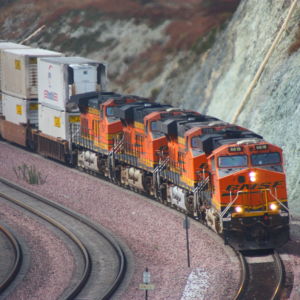With spending levels set through September, the Senate digging in on health care and the U.S. House of Representatives now turning to tax reform, some may believe infrastructure will take a backseat to these priorities. Yet observers of the legislative process know that policymaking is always occurring, even if it is not always in plain sight.
While any infrastructure package will be complicated, the private freight rail sector — unique in the discussion as the industry is not necessarily seeking federal dollars — offers straightforward advice: advance public policies that both enhance public spending and spur private infrastructure investment.
We stand on firm ground, as one train can take hundreds of trucks off the road, thereby lessening road and bridge deterioration. The industry has also spent $635 billion since partial deregulation nearly 40 years ago — money the industry pays so taxpayers do not.
As lawmakers turn their attention to actual legislation, our industry offers recommendations as a starting point in this sure-to-be lengthy process, simply for the transportation part of infrastructure:
1. Stop applying Band-Aids to the insolvent Highway Trust Fund, the pool of money funded almost solely by the gas tax and which is used to fund federal and state transportation infrastructure projects. Because the gas tax does not cover operating expenses, and because commercial users such as trucks do not pay for their proportional use of roads, taxpayers have subsidized the fund to the tune of $143 billion since 2008. We need measures such as a weight distance fee that accounts more realistically for commercial road use.
2. Do not make things worse by pushing heavier trucks onto transportation networks. Any federal program that boosts truck weight limits at the federal level further subsidizes commercial highway users at the expense of taxpayers, exacerbates deterioration of crumbling infrastructure and tilts the policy scale against a critical freight rail industry. Trucks today do not cover their current impact and heavier trucks will only force taxpayers to further bankroll the underpayment of even heavier trucks, according to U.S. Department of Transportation data.
3. Enact tax reform to spur economic growth and generate revenues needed for sustainable funding. We need a simpler and fairer tax code, reducing the business rate to a globally competitive level to broaden the tax base, enhance U.S. economic development and promote growth. Divisive items related to tax reform must not impede the larger goal to enhance competition, which for railroads and American industry in general, will lead to more domestic spending.
4. Streamline government processes that will similarly unshackle the business community and fuel an American renaissance not seen for decades. By generating policies that focus more on desired outcomes than prescriptive steps, cutting red tape in the permitting process and by actually communicating with the private sector, long-delayed infrastructure projects may finally come to fruition. Not by eradicating regulation, but by instilling good government principles — transparency and complete and sound science — railroads, trucks and other transportation stakeholders would gain efficiencies that make room for greater innovation and investment.
5. Ensure the vitality of private infrastructure, namely a freight rail network that serves nearly every industrial-, wholesale-, retail- and resource-based sector of the economy. This means Washington regulators ditching numerous proceedings to re-regulate freight rail, most notably a proposed measure called forced access, which would allow the government to order one rail company to use its own privately owned facilities on behalf of a competitor. Unneeded government meddling in the operations of this 140,000 mile network that keeps trucks off the road, reduces emissions and supports 1.5 million jobs nationally, is in direct opposition to the larger goal at hand.
Fixing U.S. infrastructure, particularly roads and bridges, is no small task. But by spurring private investments and ensuring the vitality of freight rail, a messy picture is at least a bit neater.

